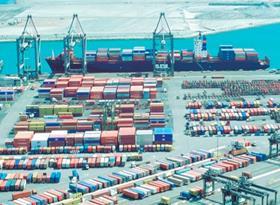
A Regional Export Plan for the Port of Los Angeles has been unveiled by the city’s Mayor Antonio Villaraigosa in a bid to encourage more cargo growth for both exports and imports, according to a report by IFW.
Over the next five years, the initiative will see major investments made in the port, including a US$1.5bn cash injection to provide superior shipping and logistics infrastructure and attract first-class business tenants.
The infrastructure improvements are designed to double exports by 2015 as well as boost imports into the port of Los Angeles, the report said.
“Several container terminal expansion projects make up a significant part of the investment,” explained Phillip Sanfield, director of media relations for Port of LA.
“Those improvements will lead to more cargo growth, both in exports and imports.”
In addition, US$370m will go towards a channel deepening project, to provide 16m in depth at the port’s containership berths, according to IFW.
“Several years ago, the port of Los Angeles launched TradeConnect, our own programme to help small and mid-sized businesses learn the basics of exporting,” Sandfield noted.
'We’re very pleased that this effort will be expanded significantly across the region and co-ordinate our efforts with other agencies, public and private, that can assist companies in growing exports.
“The port of Los Angeles saw record exports in both 2010 and 2011, and we hope to see the trend continue,” he added.
The first step of the Regional Export Plan was to establish the Los Angeles Regional Export Council (LARExC), a collaboration of regional export service organisations including seven key partners: the Mayor’s office, Area Chamber of Commerce, Centres for International Trade Development, USC and UCLA Centres for International Business Education and Research, Port of LA and Los Angeles World Airports.
LARExC recently received its first private sector investment from JP Morgan Chase.
The city is making major investments in LAX and the Port of Los Angeles to ensure that Los Angeles maintains its edge as a hub of international trade and regional exporters have the best infrastructure to work with.



